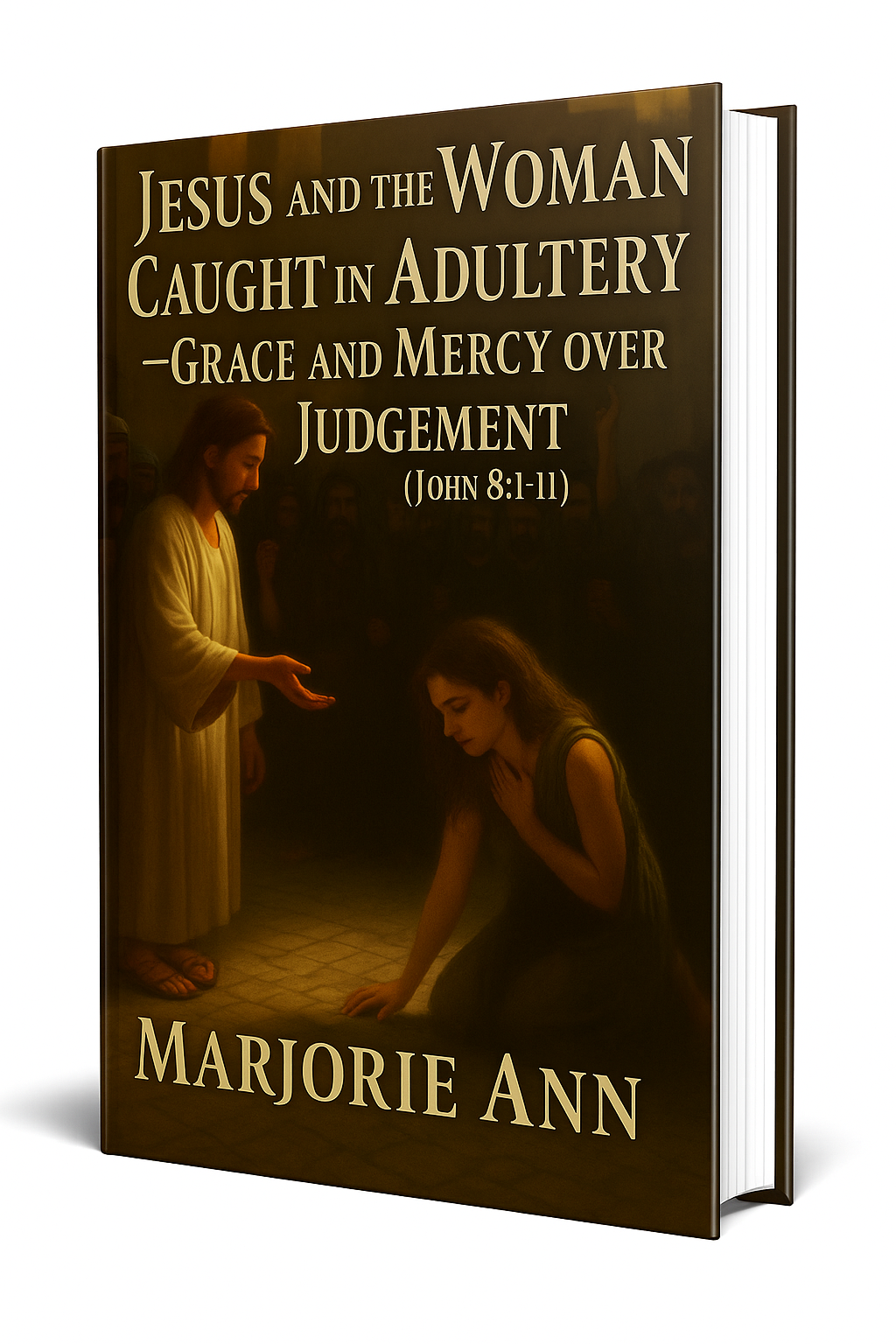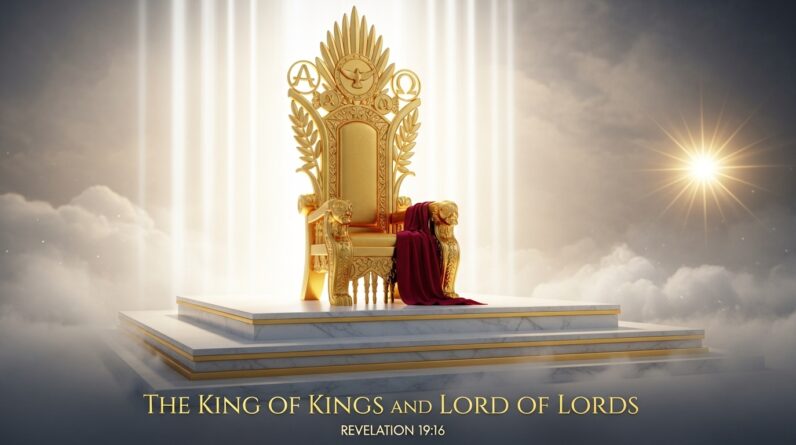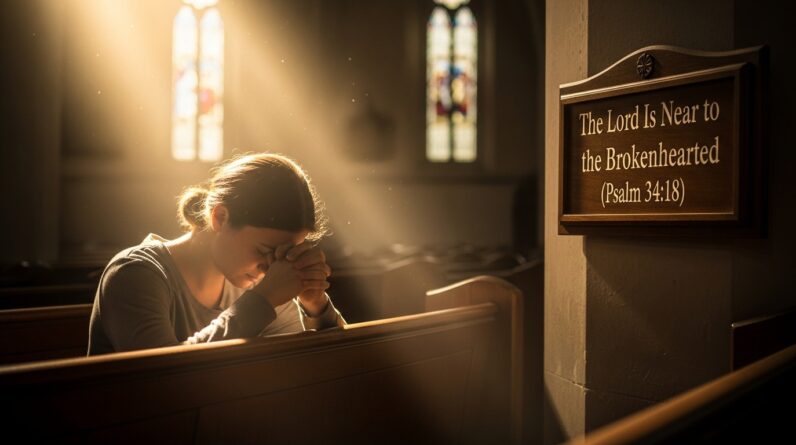When The Curtain Was Torn (Matthew 27:51)
You stand at the foot of the cross. The sky has darkened. There is sorrow, bewilderment, and the weight of sin hangs heavy over all creation. Then, in a moment that changes everything, the curtain in the temple is torn from top to bottom. That moment—when the curtain was torn—is one of the most profound, hopeful, and theologically rich events recorded in Scripture. Matthew tells it plainly: Matthew 27:51. The veil that once separated the holiest place from the people is rent, and with it came a declaration: nothing stands between you and God anymore.
The scene and the significance of the veil
When you read the Gospels, the tearing of the temple curtain is not an incidental detail; it is theologically loaded. It is recorded in Matthew’s account at the climactic moment of Jesus’ death: Matthew 27:51. The curtain’s ripping signals a dramatic reversal of barriers that had stood since the beginning of the covenant community—a reversal that points directly to Jesus and the new access to God He secured.
The image is vivid and immediate. For centuries, that curtain—also called the veil—stood as a physical and symbolic boundary. It separated the Holy of Holies, where God’s presence was most manifest, from the rest of the temple and, by extension, from the people. When the curtain was torn, it was as though God Himself had opened the way, inviting you to come near.
The curtain in the Old Testament world
The construction and purpose of the curtain
To understand why the tearing matters so much, you need to know what the curtain represented. God instructed Moses to make a veil to separate the Holy Place from the Most Holy Place in the tabernacle: Exodus 26:31-33. That curtain was made of fine linen and embroidered with cherubim. It wasn’t mere ornamentation; it marked the place where God’s presence resided in a special way. Only the high priest could pass beyond it, and only once a year on the Day of Atonement. The curtain guarded access to God’s immediate presence.
That veil was more than fabric. It symbolized the holiness of God and the reality of human separation from Him because of sin. When you appreciate the weight of that symbolism, you begin to see why Matthew’s account of the curtain being torn should arrest your attention.
The theological meaning behind the barrier
The curtain communicated three basic truths to the people of Israel: God is holy, sin creates a barrier, and access to God requires mediation. The stories and laws surrounding the tabernacle and later the temple reinforced these points again and again. The high priest’s restricted access to the Most Holy Place taught a generation that God’s presence was not casual; it was precious, guarded, and costly.
When the curtain was torn, the message was unmistakable. The separation that sin had erected had been dealt with in a decisive, once-and-for-all way. The old system of guarded access pointed to the One who would remove the barrier entirely. The veil was not destroyed as an end in itself; it was removed to reveal the heart of God’s plan in Christ.
The Gospel accounts: how Matthew and the others tell it
Matthew’s account and its details
Matthew records the tearing of the curtain at the very moment of Jesus’ death: Matthew 27:50-54. He tells of the temple curtain being torn in two, of an earthquake, and of tombs opening—signs that nature itself was responding to the cosmic significance of what had just taken place. Matthew wants you to see that this was not a private or insignificant event. It was a cosmic declaration that God’s redemptive work had reached its decisive moment.
Jesus’ death is central. The veil was not torn randomly; it was torn in connection with Him—when the curtain was torn, the curtain was torn because of Jesus.
Multiple witnesses: Mark and Luke
It is not only Matthew who notices the tearing; the other Synoptic Gospels also present the same reality. Mark notes the veil’s tearing in his account of the crucifixion: Mark 15:38. Luke, too, describes the veil being torn at the same time: Luke 23:45-46. When more than one Gospel accounts the event, the historical credibility of the moment is strengthened. The tearing of the curtain was witnessed, reported, and remembered as a turning point.
These Gospel testimonies help you understand that when the curtain was torn, something in the order of God’s redemptive plan had shifted. It was not a subtle hint; it was a public, unmistakable sign that the old way of access had been transformed.

What did the tearing signify theologically?
Access to God: the removal of separation
The most immediate theological significance of the torn curtain is that access to God is no longer mediated in the same way. Where once only the high priest could enter, now the way to God has been opened for all who come by faith in Jesus. The book of Hebrews picks up on exactly this point. It draws a straight line from Christ’s sacrifice to your bold access into the Most Holy Place: Hebrews 10:19-22. Those verses invite you to “draw near” with a sincere heart because the barrier has been removed by the blood of Jesus.
When the curtain was torn, the message was clear: you don’t need an earthly mediator to approach God anymore. Christ is your high priest and your way. The old system of animal sacrifices and restricted access pointed forward to Him; in His death, that pointing reached fulfillment.
Fulfillment of the sacrificial system
The temple system, with its sacrifices, priests, and rituals, pointed toward a final, sufficient sacrifice. Jesus’ death on the cross was precisely that. Hebrews explains how the sacrifices of the Old Covenant were shadows of a reality fulfilled in Christ: Hebrews 9:11-12. When the curtain was torn, it was as if God removed the training wheels on His covenant economy and showed the world that the definitive atonement had been accomplished.
This does not devalue the Old Testament worship; rather, it fulfills it. The sacrifices had a purpose: to show your need and point to the ultimate sacrifice. When the curtain was torn, the purpose was achieved in Jesus.
A declaration about God’s presence and judgment
The tearing of the curtain is not only about access; it also speaks of God’s presence and His righteous judgment. In Matthew 27:51-53 you read of tombs opening and many saints being raised. These signs indicated that God was doing something decisive in history—something that touched life, death, and the very presence of God among His people. When the curtain was torn, it was as if heaven and earth met in one defining act—the death of Jesus—calling all to reckon with the claim of God.
How does it affect you personally
You have direct access to God through Christ
This is the heart of the matter for you. When the curtain was torn, it meant you can approach God directly—without fear, without the need for ritual intermediaries. You can come just as you are, bearing your burdens, your failures, your fears, and your hopes. Scripture urges you to draw near to the throne of grace with confidence: Hebrews 4:16. The barrier that once stood between you and God’s immediate presence has been removed.
This access is not cheap or casual. It is the costly gift of a Savior who gave Himself so you could stand forgiven. When the curtain was torn, God extended an invitation—not to complacency, but to sincere, reverent, and bold communion.
Freedom from the power of sin and guilt
When you understand the torn curtain, you also understand liberation from the power and penalty of sin. Romans declares that Christ’s sacrificial love shows God’s grace to you even while you were still a sinner: Romans 5:8. Alongside that, the promise of forgiveness is real: if you confess, you are cleansed: 1 John 1:9. The curtain was torn because sin needed a solution, and Jesus provided it.
This is freedom that changes how you live. You don’t carry the invalidating weight of guilt the way you once did—because Jesus carried it on the cross. With the veil removed, you can walk in the light of God’s forgiveness and grow in holiness under His grace.
Boldness in prayer and worship
Because of the torn curtain, your approach to prayer can be bold and honest. You can speak to God candidly, pour out your heart, and trust that He listens. Jesus’ death did not distance you from God; it brought you near. You are invited to persistent prayer, to honest confession, and to worship that springs from relationship rather than mere obligation.
When the curtain was torn, prayer ceased to be merely ritual for the few and became relationship for the many. That changes everything about how you live—how you pray, how you worship, and how you trust.
Comfort for those who suffer
God is nearer in your pain than you imagine
The tearing of the curtain is not only theological; it is pastoral. When you suffer—when grief, loss, or illness presses in—you often feel separated from God. The torn curtain reminds you that God’s presence is not removed but made accessible. Psalm 34:18 proclaims, “The Lord is close to the brokenhearted”: Psalm 34:18. In Christ’s death and resurrection, God didn’t hide from your suffering; He entered into it.
When the curtain was torn, the cost of your intimacy with God was paid. You are invited to bring your wounds to the One who understands them more fully than anyone else. In your pain, He is not distant; He is near.
A hope that death cannot finally overcome
Because of the cross and the torn curtain, death loses its finality. Matthew reports that when Jesus died, the earth shook and tombs opened: Matthew 27:51-53. These signs point to the hope of resurrection and life beyond death. For you, this means that the grief you feel is real, but it does not have the last word.
When the curtain was torn, God was declaring that death will not triumph over His people. Your faith is rooted in a living Savior who conquered death and opened the way to eternal life.
Practical ways to live out the meaning of the torn curtain
Draw near to God daily
Because you now have direct access, cultivate daily practices of prayer and Bible reading. Spend honest time before the Lord—sharing your joys, your failures, and your needs. The torn curtain invites you to a continual, growing relationship with God. Let your prayer life be bold and persistent, because you are drawing near not to a distant deity but to a Shepherd who cares for you.
Live in community and reconciliation
The tearing of the veil was not only about personal access; it also signaled that God’s people are to reflect His reconciling work. If the barrier to God has been removed, then barriers between people should be addressed. Live in humility, pursue forgiveness, and foster unity. The new way inaugurated by Christ invites you into a community marked by grace and truth.
Offer your life as worship
The access you’ve been given calls for a response. Romans urges you to present your body as a living sacrifice: Romans 12:1. Your worship is not confined to a building or a ritual but is expressed as a life lived for God’s glory. When the curtain was torn, God opened a new way for you to worship Him in spirit and in truth.
Answering common questions
Was the tearing natural or supernatural?
People wonder: was the curtain simply rubbed and worn, or was it a miraculous sign? The Gospel accounts tie the tearing to the moment of Jesus’ death and to accompanying signs like an earthquake: Matthew 27:51. The text emphasizes a divine purpose. Whether you frame it as a supernatural act or as a providentially timed event, the weight of Scripture points to God’s intentional declaration: the old barrier has been removed in Christ.
Does the torn curtain mean the law is abolished?
Some fear that the torn curtain means God’s moral law no longer matters. Jesus Himself said He did not come to abolish the law but to fulfill it: Matthew 5:17. The tearing of the veil does not cancel God’s righteous standards; it frees you from reliance on ritual and from the penalty of sin so that you can walk in obedience out of love rather than obligation. The new covenant calls for a transformed heart, not lawlessness.
The evangelistic urgency of the torn curtain
An open invitation to everyone
When the curtain was torn, God extended a universal invitation. The access once reserved for a priesthood was now available to all who put their trust in Jesus. John records Jesus’ words about being the way: John 14:6. The torn curtain points to Jesus as that way. If you have never trusted Him, the torn curtain is not a historical curiosity—it is your open door.
Respond with faith and confession
If you are reading this and you have not yet turned to Christ, let the ripping of the veil be the moment you respond. Romans describes the path of salvation in simple terms: confess with your mouth and believe in your heart: Romans 10:9-10. The cross invites you into a living relationship with God. When the curtain was torn, it was meant to make that relationship possible for you.
Living in the reality of God’s presence
Assurance that nothing separates you from God’s love
Paul wrote of the relentless love of God that cannot be separated from the believer in Christ: Romans 8:38-39. The torn curtain is a vivid symbol of that truth. Nothing—neither death, nor despair, nor sin—can ultimately separate you from the love purchased by Jesus on the cross.
When the curtain was torn, God was declaring an unshakable truth: He will not let you go.
A call to holiness and hope
God’s grace is not a license to sin; it is a power unto new life. Because you now draw near by faith in Christ, pursue holiness with the same fervor with which you embrace grace. The torn curtain does not excuse complacency; it transforms your motivation. You live in hope—knowing that the God who invited you near is with you now and forever.
A final invitation
When the curtain was torn, a doorway was opened. It is a door to forgiveness, to communion, to life, and to hope. You are invited, personally and now, to step through that doorway by faith. Come to Jesus with honesty, with your need, and with trust. He is the One who bore your sin and rent the veil so that you might stand forgiven.
If you have never received Christ, do not delay. Confess your need, repent, and trust Him. If you are already a believer, draw near again—allow the torn curtain to remind you of the access, the presence, and the power you possess through Him.
May the truth of the torn curtain encourage you, steady you in trials, and lead you into deeper devotion. Remember the words of Scripture: because of Christ, you may “draw near with a true heart in full assurance of faith” (Hebrews 10:22). When the curtain was torn, God made a way for you—and that way is Jesus.
Explore More
For further reading and encouragement, check out these posts:
👉 7 Bible Verses About Faith in Hard Times
👉 Job’s Faith: What We Can Learn From His Trials
👉 How To Trust God When Everything Falls Apart
👉 Why God Allows Suffering – A Biblical Perspective
👉 Faith Over Fear: How To Stand Strong In Uncertain Seasons
👉 How To Encourage Someone Struggling With Their Faith
👉 5 Prayers for Strength When You’re Feeling Weak

📘 Jesus and the Woman Caught in Adultery – Grace and Mercy Over Judgement
A powerful retelling of John 8:1-11. This book brings to life the depth of forgiveness, mercy, and God’s unwavering love.
👉 Check it now on Amazon
As a ClickBank & Amazon Affiliate, I earn from qualifying purchases.
Acknowledgment: All Bible verses referenced in this article were accessed via Bible Gateway (or Bible Hub).
“Want to explore more? Check out our latest post on Why Jesus? and discover the life-changing truth of the Gospel!”








